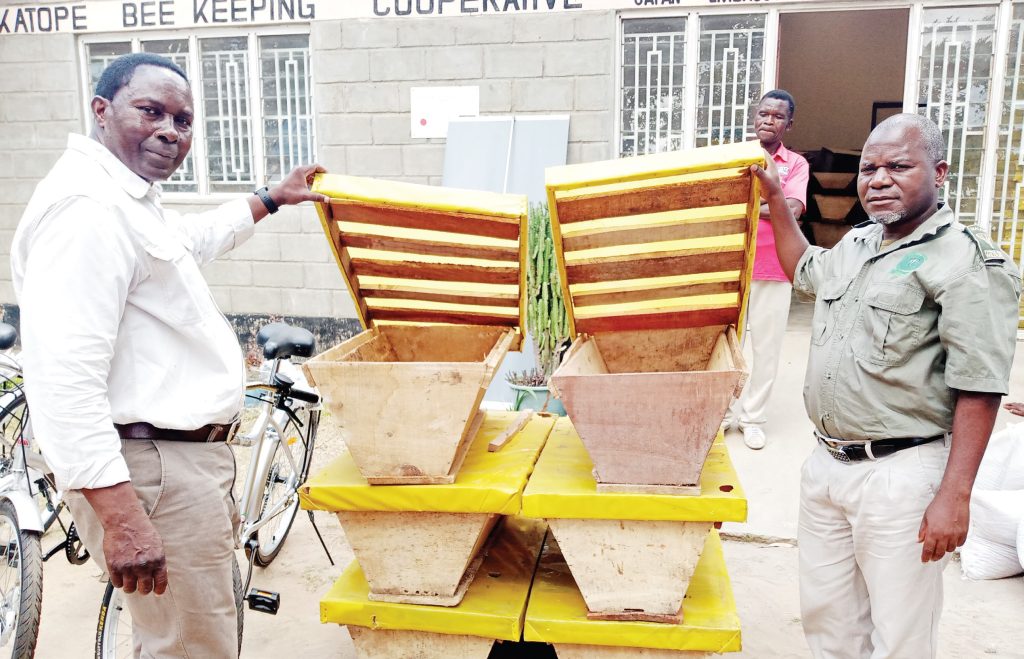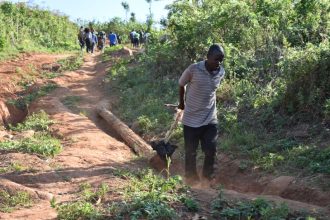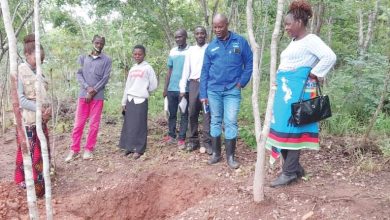Taming ‘ecosystem engineers’ of Kasungu National Park
Up to the early 1990s, Kasungu National Park, the country’s second largest after Nyika, had the largest elephant population, with over 2 000 roaming freely in the protected area.
“This was also the case with most of the other species such as buffalo, kudu, sable and hartebeest,” explains park manager Ndaona Kumanga.

However, at the beginning of the new millennium, poachers from the surrounding communities and beyond invaded the park with blazing muzzleloaders shooting game, especially buffaloes and elephants for both meat and trophies.
By 2015, the elephant population had plummeted to about 200, rendering the park unattractive to tourists
“This is the period poaching was at its peak owing to lapses in security, largely due to lack of funding.
“Again, this is the time the buffer zone, which averaged 2.1 kilometres in thickness, was invaded and cleared for charcoal, settlements and farming,” Kumanga says.
Historically, the park used to be a dwelling place for hunters and their settlement continued into the 20th Century, before the place was proclaimed Fort Alston Forest Reserve in 1922 and later a game reserve in 1930.
Old village sites are still clearly visible today alongside Iron Age artefacts in form of iron kilns and the famous Solonje rock paintings.
Thus the invasion of the park for livelihood by the surrounding communities could as well be understood as a hangover of an old lifestyle.
Nevertheless, these actions threaten the future of the park, where not only the country’s largest miombo woodland sits, but also where ecosystem engineers, as elephants are called for their large contribution to ecosystem balancing, roam.
Following its declaration as a national park in 1970, government gazetted a buffer zone adjacent to the park’s south-eastern boundary to limit cultivation, planting, cutting, building, carrying firearms and starting fires.
Averaging 2.1 kilometres in thickness and about 75 kilometres long, the buffer zone has long been cleared for settlements and cultivation.
According to Central Region Parks and Wildlife division manager Leonard Moyo, efforts to save Kasungu National Park became more realistic in 2016 when his department entered into a partnership with International Fund for Animal Welfare (Ifaw).
“We partnered with Ifaw in 2016 and their coming in has helped in securing the park such that by 2021, we were convinced it had finally been fortified.
“This is why in 2022, Ifaw supported us to translocate at least 694 animal species, including 263 elephants from Liwonde to Kasungu in a restocking programme to boost the numbers of the key wildlife species,” Moyo says.
He says high poverty levels among some communities surrounding the park are still posing a threat to conservation efforts and the future of the protected area, stressing that poverty has for a long time forced people to view the park as a source of their livelihood.
Kasungu National Park is surrounded by traditional authorities Lukwa, Kaphaizi, Mwase, Nthunduwala, Mawawa, Chulu, Chisinga and Kawamba.
“We don’t want to slide back to the sad past. This time, we are carrying out various initiatives to support the surrounding communities to build their resilience so that they stop relying on the park products for their livelihood,” Moyo says.
Under these initiatives, communities have been trained in climate-smart agriculture so that they boost their crop production and become food-secure. In addition, they have been given free tree and crop seeds.
“We sent lead farmers for training in Zambia to learn how our colleagues are doing that side.
“We have also provided these lead farmers with bicycles to ease their mobility as they go round communities training others,” Moyo adds.
The department has also donated at least 800 beehives which will be put both inside and outside the park as an alternative income-generating activity for the communities.
With its ‘Room to Roam’ vision, Ifaw is extensively supporting wildlife conservation efforts for Africa’s surviving savannah elephants, including those at Kasungu National Park and communities where they share the land and its resources.
Ifaw field operations manager Gervaz Thamala says the future of Kasungu National Park lies in the hands of a community that appreciates the importance of co-existing with the animals.
“The people that kill the animals, the people that cut trees and the people that destroy the fence live in the surrounding areas. Our efforts will be in vain if we don’t support them,” says Thamala.
He says there is need to arrest activities that threaten the future of the park by ensuring co-existence between the animals and the people.
“The people must not be a burden to the animals through poaching and cutting trees thereby destroying the habitat for the animals. Equally, the animals must not be a burden to the people.
“So, we are erecting a perimeter fence to keep the animals in the park so that they do not destroy people’s gardens. At the same time, we are coming up with new initiatives that can support the communities so that they do not invade the park for their livelihood,” he says.
There have been clashes between communities surrounding the park and elephants in recent times. At least six people have been killed so far, with crops and houses destroyed.
The elephant’s invasion of homes and gardens is said to have increased the people’s antagonistic behaviours towards the elephants and the park at large.
Under the same initiative, park authorities have also started constructing elephant proof granaries so that in case of invasion, the grain is protected.
“We expect that people will form clubs or cooperatives to keep their produce at one place. So, we are supporting them with storage infrastructure that is free from the threat of elephants.
“We hope that these initiatives put together will make a statement on our resolve to protect both the park and the surrounding communities,” Thamala says.
Elephants eat up to 150 kilogrammes of forage and drink up to 190 litres of water a day. They must navigate across large areas to find enough food and water to survive.
But as climate change raises temperatures and changes rainfall patterns, resources become even more scarce and elephants get pushed into new areas, including communal lands where they destroy crops and houses.
The problem has been exacerbated by cultivation of crops along the park boundary and inadequate perimeter fencing, which is only covering 88 kilometres, leaving a stretch of at least 40 kilometres open.
Group Village Head Jambulani Nkhoma of Traditional Authority Lukwa urges cordial working relationship between park authorities and communities so that conservation efforts are successful.
She says communities must accept that the park was established for a purpose and that they must protect it.
“We have failed to plant trees and now our eyes are on the park. The park will not solve our problems if we don’t plant trees and adopt new farming methods in face of the changing climate,” she says.
Ecologically, Kasungu National Park is the catchment for Dwangwa River that flows east of Lake Malawi through the densely-populated Kasungu District, sustaining settlements and agriculture and contributing to the maintenance of viable fish stocks for the lake.
Economically, elephants are the largest tourist attraction in Kasungu National Park, promoting tourism, which is one of government’s priority areas, contributing 7.7 percent towards the gross domestic product of which 2.7 percent is from the wildlife sector.





